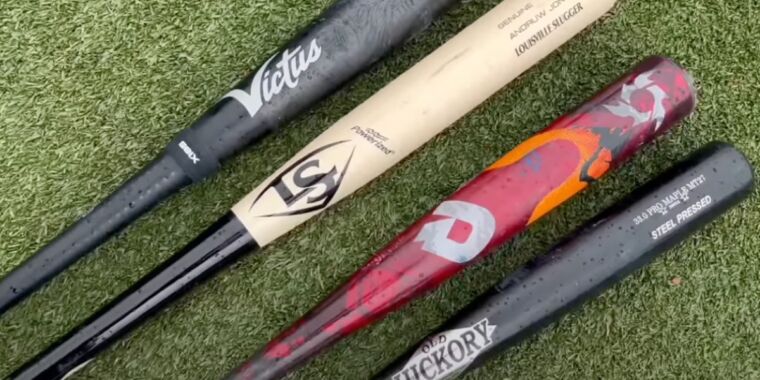Metal bats have pluses for young players, but in the end it comes down to skill - 3 minutes read

Enlarge / Washington State University scientists conducted batting cage tests of wood and metal bats with young players.
There's long been a debate in baseball circles about the respective benefits and drawbacks of using wood bats versus metal bats. However, there are relatively few scientific studies on the topic that focus specifically on young athletes, who are most likely to use metal bats. Scientists at Washington State University (WSU) conducted their own tests of wood and metal bats with young players. They found that while there are indeed performance differences between wooden and metal bats, a batter's skill is still the biggest factor affecting how fast the ball comes off the bat, according to a new paper published in the Journal of Sports Engineering and Technology.
According to physicist and acoustician Daniel Russell of Penn State University—who was not involved in the study but has a long-standing interest in the physics of baseball ever since his faculty days at Kettering University in Michigan—metal bats were first introduced in 1974 and soon dominated NCAA college baseball, youth baseball, and adult amateur softball. Those programs liked the metal bats because they were less likely to break than traditional wooden bats, reducing costs.
Players liked them because it can be easier to control metal bats and swing faster, as the center of mass is closer to the balance point in the bat's handle, resulting in a lower moment of inertia (or "swing weight"). A faster swing doesn't mean that a hit ball will travel faster, however, since the lower moment of inertia is countered by a decreased collision efficiency. Metal bats are also more forgiving if players happen to hit the ball away from the proverbial "sweet spot" of the bat. (The definition of the sweet spot is a bit fuzzy because it is sometimes defined in different ways, but it's commonly understood to be the area on the bat's barrel that results in the highest batted ball speeds.)
“There’s more of a penalty when you’re not on the sweet spot with wood bats than with the other metal bats,” said Lloyd Smith, director of WSU’s Sport Science Laboratory and a co-author of the latest study. “[And] wood is still heavy. Part of baseball is hitting the ball far, but the other part is just hitting the ball. If you have a heavy bat, you're going to have a harder time making contact because it’s harder to control.”
Metal bats may also improve performance via a kind of "trampoline effect." Metal bats are hollow, while wood bats are solid. When a ball hits a wood bat, the bat barrel compresses by as much as 75 percent, such that internal friction forces decrease the initial energy by as much as 75 percent. A metal bat barrel behaves more like a spring when it compresses in response to a ball's impact, so there is much less energy loss. Based on his own research back in 2004, Russell has found that improved performance of metal bats is linked to the frequency of the barrel's mode of vibration, aka the "hoop mode." (Bats with the lowest hoop frequency will have the highest performance.)
Source: Ars Technica
Powered by NewsAPI.org